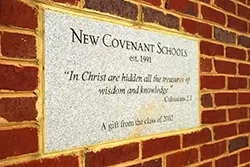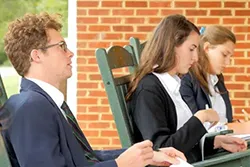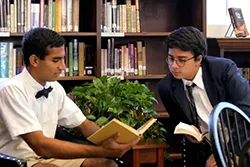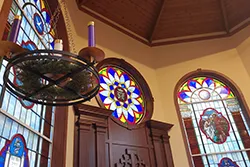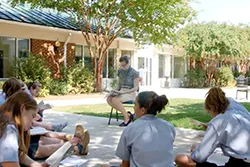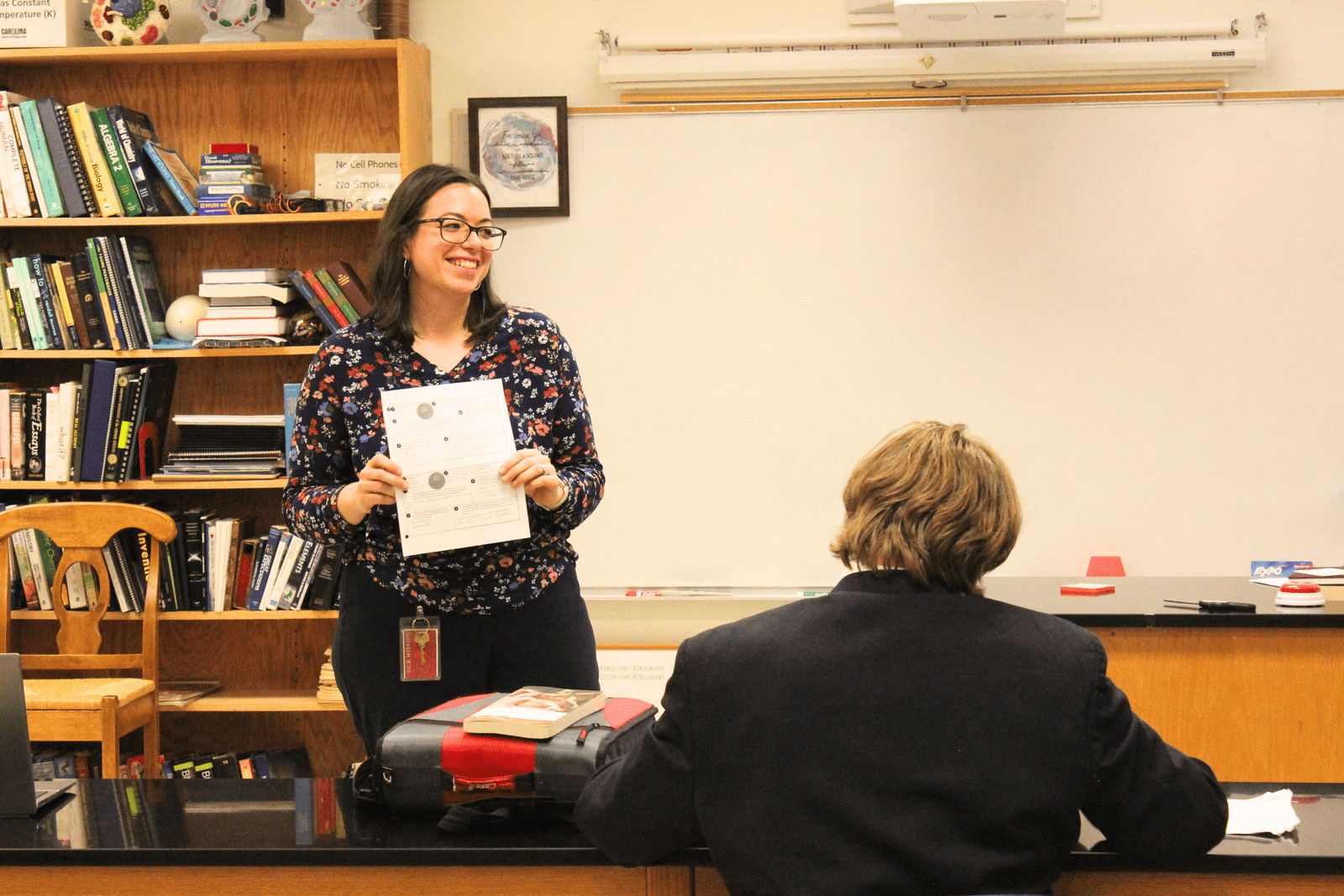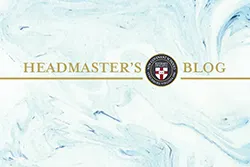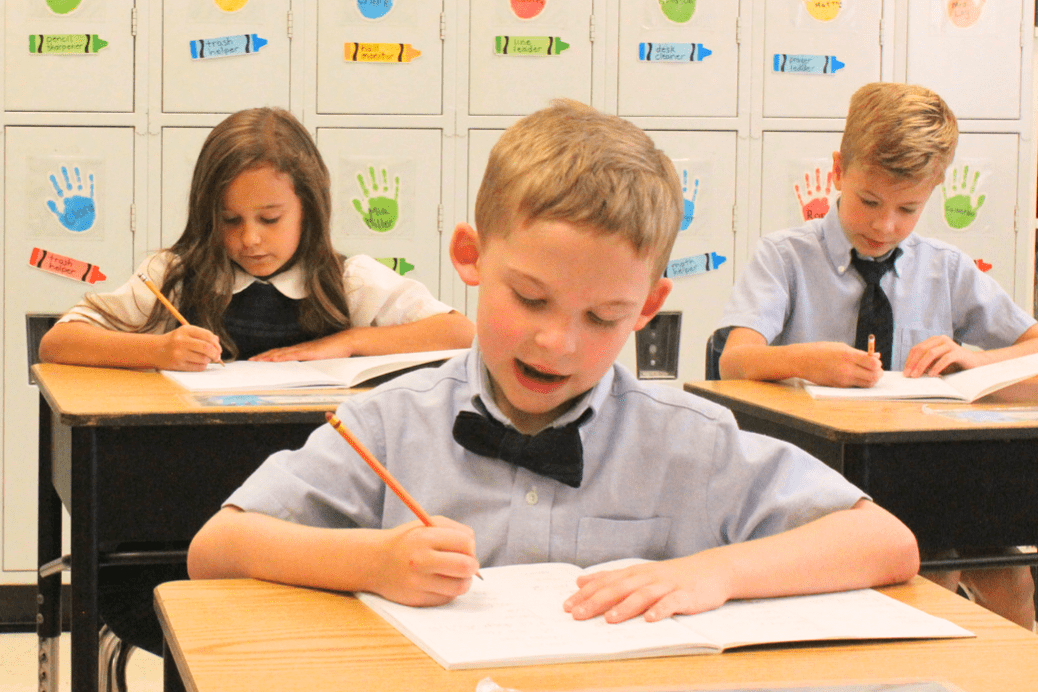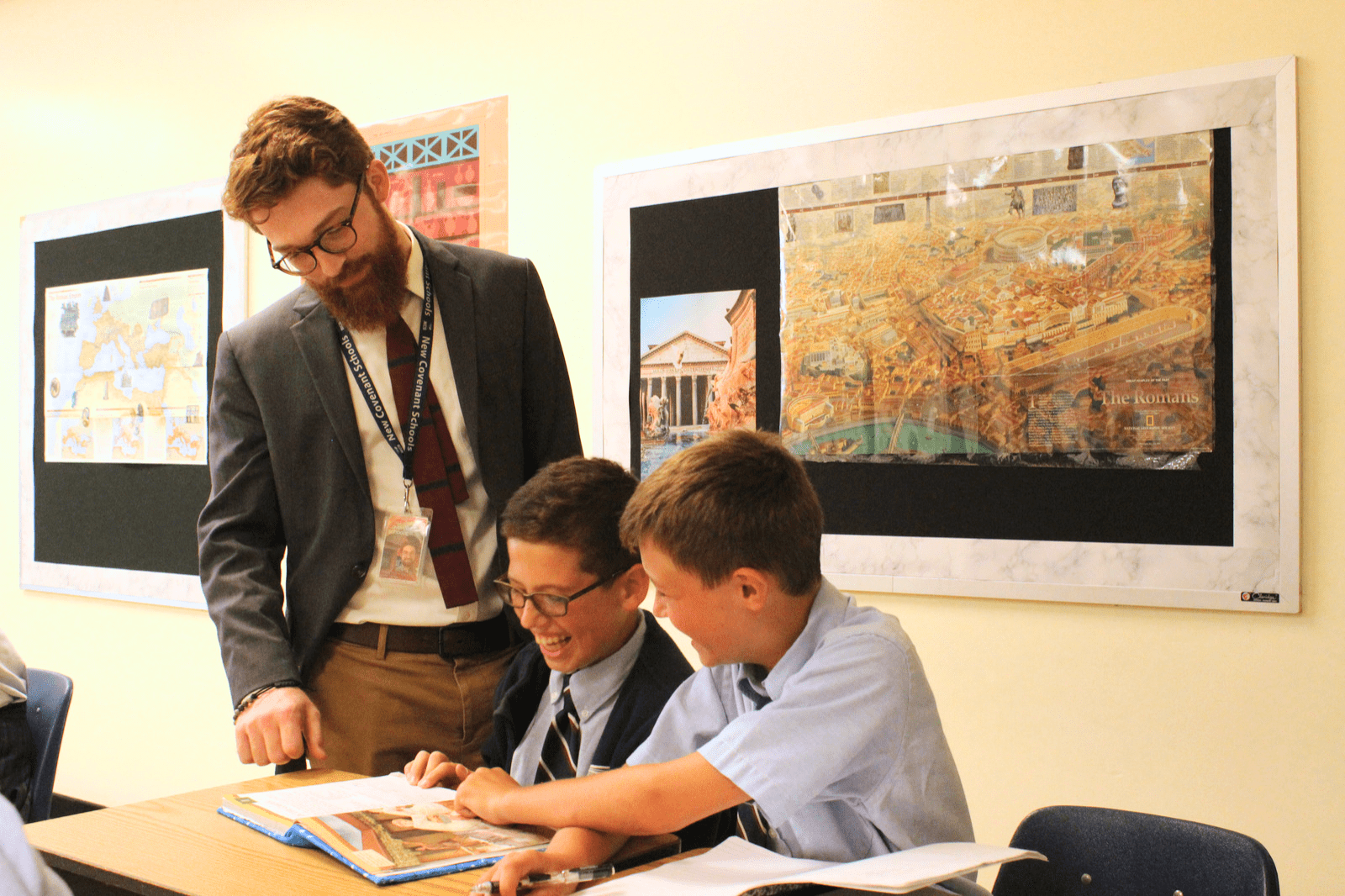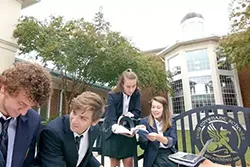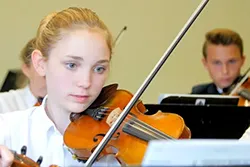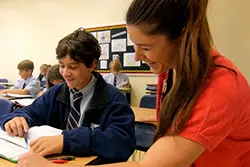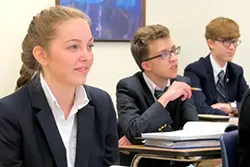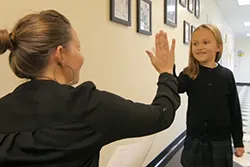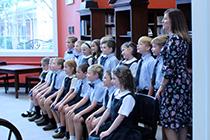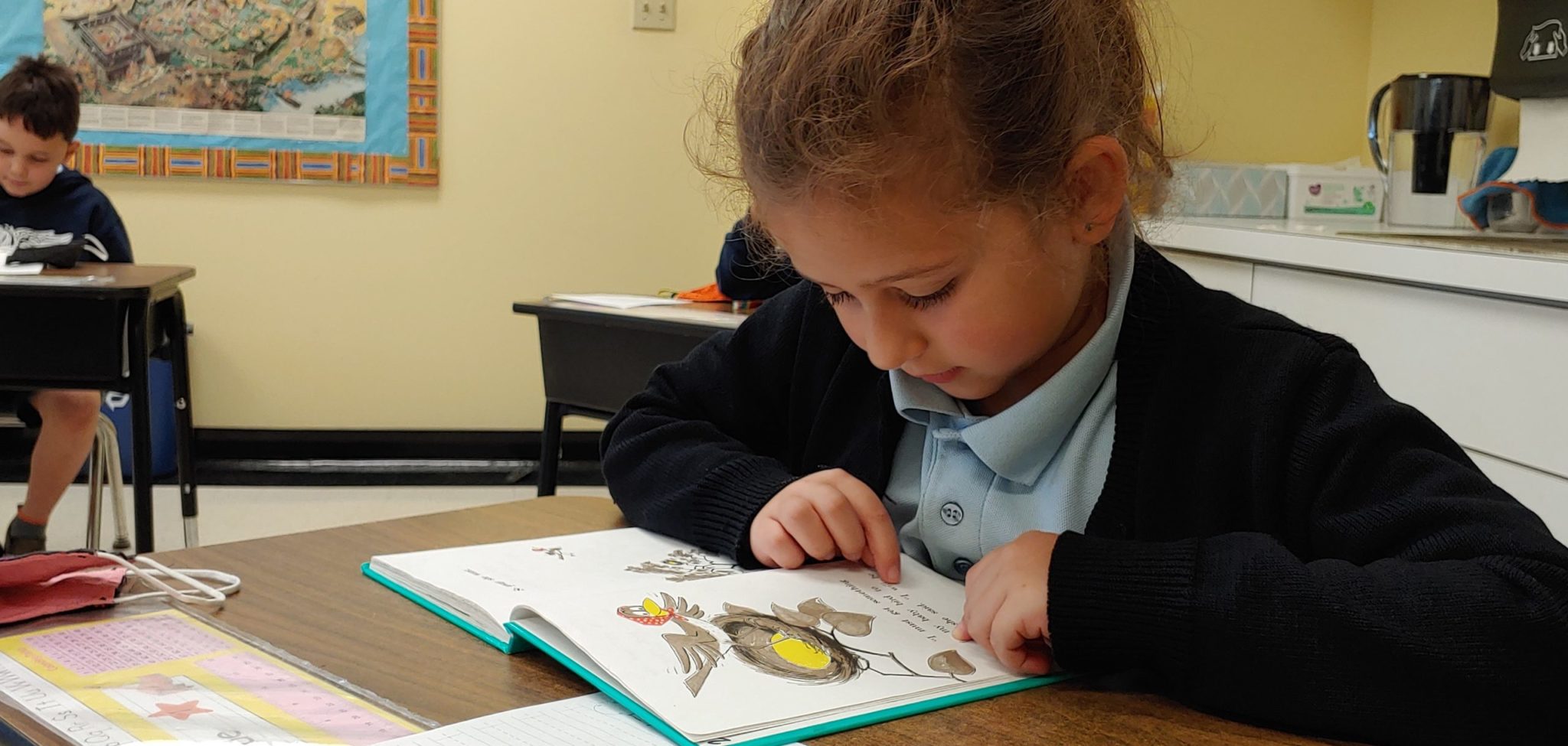There’s been a quiet little revolution going on over in first grade. Students there are learning to read! That’s right. November is the month that written language comes together for our young scholars.
New Covenant teaches students to read through a phonetic method developed by Romalda Spalding in the mid-20th century. While there are a hundred ways to teach children to read, the Spalding method is likely the most intensely phonetic. Mrs. Spalding analyzed the English language and isolated 71 phonetic sounds along with the letters that symbolized them. In her method students learn the letters, not by name, but by the sounds they make. Many letters make more than one sound, like “s” which can say “ssss,” but which can also say “zzzz” at the end of a word. Some sounds are made by two or more letters, like “ai” (aisle, trail) and other combinations can make up to six sounds, like “ough” – “oh” (though), “oo” (through), “uf” (rough), “off” (cough), “aw” (thought), and “ow” (bough). These are called phonograms.
We begin Spalding Phonics in Kindergarten where students learn 54 of the 71 phonograms to mastery. They learn to write, printing first, as their teachers vocalize the sounds of letter to them, and they record them in their composition books, saying them back to the teacher carefully as they form the letters. This process makes kindergarten students “reading ready.” They will form words with the letters they’ve learned, and some of the students will read in kindergarten – my two girls did – but the first grade is the New Covenant reading year.
This fall our first graders have been learning the rest of their phonograms to mastery. By now they know all the sounds in the English language, they have drilled them by flashcards, and they have journaled words that employ all the vocal symbols. With this information, Mrs. Spalding proved that students could avoid reading dull books with limited vocabulary restricted by the few letters they knew. In her system students in first grade are reading real books, and it all happens around November.
Each week they will continue to journal 20 or 30 words, carefully underlining the phonograms they see, and marking individual letters with a 1, 2, 3, or 4, to indicate which sound the letter is making. In addition, they are learning the 29 rules that govern the spelling of English words. After each word they will identify the rule or rules which tell them why the word is spelled as it is. You might remember “i” before “e” except after “c” or when sounding like “a” as in “neighbor” and “weigh.” That’s rule 9, of course. There are 28 others, and five rules that govern final “e.” They learn all of this.
Students will stay with Spalding Phonics through grade 4. The word lists developed by Mrs. Spalding are extensive, arranged by the frequency of their use. Students not only hone their reading skills, but also expand their vocabulary. By third grade we introduce cursive, which most schools dropped from their curricula long ago. Handwriting was important to Mrs. Spalding, something to be practiced, and every student learns manuscript and cursive to an objective standard. Next time you are in the Grammar School hallways, check out the handwriting samples displayed on the walls. It’s impressive.
So we congratulate our youngest scholars this week! November is for readers!



